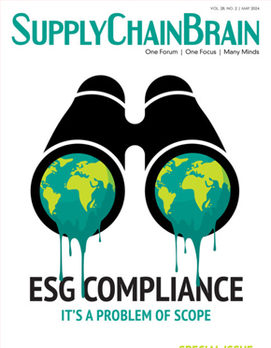
More than 66% of procurement professionals say that navigating supply chains was the biggest point of strain in the procurement process throughout the COVID-19 pandemic, according to an ongoing survey. It’s no surprise that navigating supply-chain shortages emerged as a common theme, considering the whole world required many of the same goods and services to keep businesses running as usual, from hand sanitizer to PPE suits.
It’s expected that supply-chain challenges will continue over the next year, at a minimum, as we continue to collectively move our way through the effects of the pandemic. As such, procurement teams are turning to technology now more than ever before to digitize their process and adapt. The procurement digitization process is occurring over three emerging phases: react, reevaluate and future-proof. Procurement teams may find themselves in a different phase based on their operational setup prior to COVID-19.
React
When the COVID-19 pandemic first struck, it meant that procurement teams had to do whatever was possible to keep processes running business as usual, which led to reactive decisions rather than strategic ones. The ‘react’ stage of procurement digital transformation includes initiatives such as:
- streamlining operations by bringing them online in order to more efficiently respond to urgent requests that address public health and safety;
- enabling better telecommuting capabilities while working remote or with limited access to the office;
- using online resources such as vendor databases to diversify and expand supplier pools amidst supply-chain disruptions, etc.
Some teams were able to react quickly because they had the infrastructure in place to do so, while other teams had to adopt new tools and processes in a short timeframe to effectively deal with emergency response. Those who had the foresight or strategic planning in place to move to sustainable digital processes such as validated e-procurement tools are able to continue using them into the future with minor tweaks and adjustments. Whereas those who reacted to the situation in somewhat of an urgent panic (as so many had to!) may now find themselves reevaluating the tools and processes they’re using.
Reevaluate
As procurement teams continue to respond to urgent requests and needs related to COVID-19, they must also re-assess the tools and processes that were initially adopted during the “react” stage, identifying efficiency gaps, state compliance shortfalls, and whether these solutions are sustainable beyond the pandemic. In this reevaluation phase, procurement teams need to assess their operations and tools using questions such as:
- Are my end-to-end (i.e. intake to contract management) operations digitized
- and connected?
- Is my project pipeline centralized in one place and easily accessible?
- Are our processes intuitive and easy-to-use for all internal clients?
Additionally, the demand for digital and no-touch services has grown 20% in the U.S. according to MicKinsey, so procurement teams need to address this demand as they determine long-term digitization processes. Procurements’ rapid response to COVID-19 by providing digital payment and delivery of services (especially for those in the public sector space) has set a precedent that customers or constituents will expect beyond the pandemic.
Future-Proof
Developments such as widespread vaccine distribution are bringing the end of COVID-19 restrictions and lockdown into sight, leading many organizations to start thinking seriously beyond the pandemic. COVID-19 has brought procurement’s critical role in times of crisis into the spotlight — they will be perceived in organizations as critical and strategic players within the supply-chain process, rather than the necessary ‘red-tape’ burden they are so often portrayed as. Procurement teams will need to build on their digital transformation foundation focused on efficiency, compliance and vendor engagement to meet recovery needs and answer growing demands for sustainability, resilience and technological adaptation.
As organizations have moved through these three phases in the past year, and will continue to transition through them, we’ve witnessed a rise in five core trends that have enveloped the procurement function within supply chains. These trends must be considered as organizations enter the ‘futureproof’ phase and leverage technology as an equalizer for all of them:
1. Cost-cutting decisions. Procurement not only needs to do more with less, but also provide the strategy that will help the rest of their agency thrive despite limited resources.
Because procurement teams across North America demonstrated their strategic potential in the early days of the COVID-19 pandemic, they will inevitably be called upon to be major decision-makers when it comes to cost cutting and planning and budget reprioritization.
2. Telecommuting. COVID-19 has ushered in a new normalization of remote work, something that is relatively novel for public sector employees. As of 2019, for instance, only 42% of the U.S. federal workforce were deemed eligible for telework. But throughout 2020, the U.S. Army, for example, has seen a 400% increase in remote work capabilities.
Procurement will no doubt be called upon to source the necessary products and solutions to build the infrastructure securely and effectively. This will mean working closely with I.T. departments to support evolving work requirements.
3. Efficiency and adaptability. The next normal of procurement will involve re-examining procurement processes, making them faster and more agile for the long-haul — not just in emergencies — to meet these new expectations from stakeholders and constituents.
As procurement teams, especially those in the public sector, brace for the forecasted economic turbulence in the coming months and years, the ability to run more bids more efficiently sets up your agency to be faster, stronger and more productive even amidst budget reprioritization and resource cuts.
4. Focus on DBE contracts. Social justice movements like Black Lives Matter had citizens turning to their government for change over the last year. What many don’t realize is that procurement departments within the government sector have the opportunity to promote social good by creating a level playing field for diverse suppliers.
Disadvantaged Business Enterprises (DBEs) have always been a focus for public procurement teams, but they have become a priority focus in the last year and we’ll see the trend continue. As such, teams can leverage technology (ie: e-procurement tools) to act as an equalizer for contract award and auditing to ensure a balance occurs between DBE and non-DBE vendor contracts.
5. Data and A.I. Procurement has always been a “jack of all trades, master of none” department, expected to have expertise in everything from construction to I.T. to professional services. As a result, procurement agents may find that a lot of their time is spent on Google searching for templates, or on the phone with a peer from another agency to see how they’re approaching new categories.
The next normal of procurement will involve more data-driven decision making to help with accessing benchmarks and data insights from peers to guide their internal clients to consider the right requirements, and apply other procurement best practices, like appropriate criteria weighting, to achieve a successful outcome.
What does this mean for government, business vendors and citizens?
These trends have already begun to grip the market and will continue to do so, so much in fact that they will become procurement’s new normal, as indicated in the ebook The Rise of Procurement’s Next Normal. When looking specifically at government procurement operations, teams will become more agile and strategic; many agencies may see the centralizing of purchases that were previously decentralized as procurement continues to develop its reputation as a data-driven partner.
Government will view its procurement department as a key strategic player, holding the ability to impact both social and economic decisions through budget and contract management. Business vendors will have clearer lines of communication and visibility into the procurement process. Therefore, they’ll have a better understanding and appreciation of the vendor selection process, especially when it comes to DBEs. Lastly, citizens will continue to experience the ripple effects of the decisions made by government procurement teams. However, because procurement decisions will be more efficient, the impacts on citizens will be experienced faster than before. It is also important to note that economic changes — and benefits — will evolve as the trend of procurement for social equality is ramping to become a driving priority for many government procurement teams.
COVID-19 may have forced many businesses to lockdown and caused many people to work from home, but it’s also the driving force behind the accelerated digital transformation that has, in many ways, pushed government procurement on its inevitable path, albeit faster than anyone could have predicted.
Omar Salaymeh is chief client and product officer at Bonfire.


.jpg?height=100&t=1715228265&width=150)
.jpg?height=100&t=1715141311&width=150)


